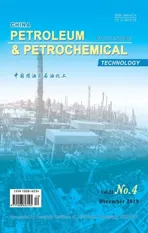Analysis and Optimisation of Halomonas Growth Factors Based on PCA and RSM
2020-01-13ShiKeHuangGuofuXuHuachunXueJianliangSunJingkuanXiaoXinfengLiLin
Shi Ke; Huang Guofu; Xu Huachun; Xue Jianliang; Sun Jingkuan; Xiao Xinfeng; Li Lin
(1. College of Chemical and Enνironmental Engineering, Shandong Uniνersity of Science and Technology, Qingdao 266590; 2. Shandong Key Laboratory of Eco-Enνironmental Science for Yellow Riνer Delta(Binzhou Uniνersity), Bingzhou 256600; 3. Shandong Peninsula Engineering Research Center of Comprehensiνe Brine Utilization, Weifang Uniνersity of Science and Technology, Shouguang 262700)
Abstract: The biomass of petroleum-degrading bacteria, such as Halomonas spp., is crucial to the alleviation of severe oil spills through bioremediation. In this paper, the bacterium (HDMP1) was isolated and identified. Growth factors were analysed and optimised through the single-factor experiments, the factor analysis (FA), the principal component analysis (PCA), and the response surface methodology (RSM). Results indicated that HDMP1 was identified as genus Halomonas. In the single-factor experiments, the range of suitable growth conditions for HDMP1 covered: a salt concentration of 2%—4%, a medium pH value of approximately 9, an inoculum concentration of 1.0%, a substrate concentration of 1.0%—1.4%, and a rotation rate of 140 r/min. The evaluation by FA and PCA indicated that three significant growth factors were the salt concentration, the pH value, and the rotation rate. A maximum biomass of HDMP1 was obtained under the conditions covering a salt concentration of 3.5%, a medium pH of 8, and a rotation rate of 151 r/min by optimization.
Key words: biomass; factor analysis; principal component analysis; growth factors; response surface methodology
1 Introduction
Owing to the rapid development of petroleum industry, the frequency of oil spill accidents has increased[1-3]. These oil-contaminated environments are handled through physical cleaning and chemical treatment. However, a small amount of residual petroleum has still remained in the marine environment. Many studies have determined the feasibility of bioremediation method to mineralise petroleum pollutants into CO2and water without producing secondary pollution[4-9].
Bioremediation is achieved by using the petroleum-degrading bacteria to absorb hydrocarbons. Currently, several genera of petroleum-degrading bacteria have been identified, such as Halomonas, Bacillus, and Pseudomonas[4]. The genus Halomonas consists of salt-tolerant bacteria, which were first reported by Wang, et al., and exhibited efficient hydrocarbon-degrading activity[10-11]. Usually, the indigenous bacteria are conducive to the restoration of ecological environment, particularly in seawater. However, indigenous bacteria cannot grow well in mutable and complex environments[9,12-13]. Hence, selecting suitable growth conditions for bacteria is necessary to biomass enhancement.
Several growth factors, such as the salt concentration, pH, inoculum concentration, and substrate concentration can affect the growth of bacterial organisms[14-17]. Oren investigated the contribution of salt concentration on Halobacterium group, and the results indicated that the biomass decreased to 30% when the salt concentration was higher than 250 g/L[18]. Ruka analysed the effect of different growth factors, such as media, incubation time, and inoculum volume on the yield of bacterial cellulose by Gluconacetobacter xylinus[19].
In summary, growth factors are important to the biomass of bacteria, and the optimisation of growth factors is necessary. Some studies have investigated the effect of growth factors on biomass. Wang, et al. optimised the growth factors of Halomonas sp., including NaCl concentration, pH, and temperature[20]. However, few reports have systematically analysed the interaction of each factor with other ones.
Therefore, in this study, the effect of growth factors on the bacterial growth is investigated through the single-factor experiments. Then, significant growth factors are analysed and selected through the factor analysis (FA) and the principal component analysis (PCA). Additionally, the biomass of petroleum-degrading bacteria is enhanced by optimising the significant growth factors through the response surface methodology (RSM).
2 Experimental
2.1 Materials
Diesel (filtered through a 0.22 μm membrane) was provided by the PetroChina Corporation (Qingdao 151st Station). The solid medium contained peptone (10 g), beef extract (4.0 g), NaCl (5.0 g), and distilled water (1L) with pH value being adjusted from 7.0 to 7.2. Then, agar (15—20 g) was added.
The mineral salt medium contained NaCl (30 g), Na2HPO4(0.6 g), KH2PO4(0.5 g), NH4NO3(3.0 g), yeast extract (2.0 g), 1 mL of CaCl2(1.11 g/L), 1 mL of FeSO4(1.52 g/L), 2 mL of MgSO4(3.6 g/L) and 1 L of distilled water with pH adjusted to 7.2—7.5.
All mediums were sterilized at 121°C for 20 min before being used. Samples were incubated at 30°C and were then subject to stirring at 140 r/min for 3 days.
2.2 Screening of petroleum-degrading bacteria
Seawater was obtained from the Ferry Terminal, Huangdao District, Qingdao, Shandong, China. 5% (volume fraction) of seawater and 1% (volume fraction) of diesel were added to the 100 mL autoclaved mineral salt medium. Samples were subject to stirring at 30°C under a revolution rate of 140 r/min for 5 days. In addition, 10% (volume fraction) of samples and 1% (volume fraction) of diesel were added into a fresh autoclaved mineral salt medium. Then, the samples were spread onto a solid medium, and grew on the plates at 30 °C for 3 days.
Every single-strain bacterium obtained from the solid medium was tested in the diesel degradation experiments. Finally, the efficient petroleum-degrading bacterium, with high diesel degradation rate, was selected and identified through 16S rDNA sequencing, which was conducted in the Shanghai Biotech Co., Ltd.
2.3 Experimental design
In order to preliminarily investigate the effects of growth factors, the five growth factors (including salt concentration, pH, inoculum concentration, substrate concentration, and rotation rate) were firstly studied by single-factor experiments. After 3 days of culture growth under different growth conditions, the biomass of the petroleum-degrading bacteria was evaluated by measuring OD600with a spectrophotometer. All samples were analysed three times.
Then, by means of FA and PCA, the importance of every growth factor based on single-factor experimental results was explored to select the significant growth factors for further study.
Finally, the growth condition was optimised based on previous studies by RSM. According to the Box-Behnken design, a total of 17 experiments for the 3 significant growth factors were performed by Design-Expert. Specified codes and range for each parameter are displayed in Table 1.

Table 1 Specified codes and the range for each parameter
3 Results and Discussion
3.1 Isolation and identification of petroleum-degrading bacteria
An efficient petroleum-degrading bacterium was isolated and named as HDMP1. HDMP1 was identified as genus Halomonas through 16S rDNA alignment by https://blast.ncbi.nlm.nih.gov/Blast.cgi. At present, the ability of Halomonas to degrade hydrocarbons has been proved by many scholars[21].
3.2 Single-factor experiments
The effect of different growth factors on HDMP1 was explored through the single-factor experiments, with the results illustrated in Figure 1. At high salt concentrations, OD600was high but subsequently showed a downward trend. At the salt concentrations in the range of 2%—4%, the biomass was maintained at high levels because inorganic salts are essential nutrients, which played an important role in microorganisms growth, specifically capable of promoting the enzyme reaction, maintaining the membrane balance and regulating the osmotic pressure[22]. However, excessive salinity can reduce the respiration rate of microorganisms and impair enzyme activity; thus, maintaining an appropriate salinity is critical[23]. Meanwhile, variations in pH values can affect the utilization of nutrients by microorganisms. In this experiment, the biomass of HDMP1 showed better results when the pH value was approximately 9 because the microbial enzyme activity was inhibited at high pH levels. OD600firstly increased and then followed a downward trend with the increase of inoculum concentration. OD600was high at 1.0%—1.4% of substrate concentrations. Biomass amount was quite high at a rotation rate of 140 r/min, because an appropriate amount of oxygen is conducive to the growth of bacteria.
3.3 Data analysis based on FA and PCA
FA and PCA can transform multiple factors into fewer public factors and rank the factors by importance. These methods were used in the selection of significant growth factors in this experiment. The results of eigenvalue and its contribution rate are shown in Table 2.
As presented in Table 2, two public factors were selected from the five growth factors. Among them, the variance contribution of the first public factor was 41.634%, whereas the variance contribution of the second public factor was 31.955%. Given that the two public factors constituted a large part of the initial data, the two public factors can be used to replace the five original growth factors.
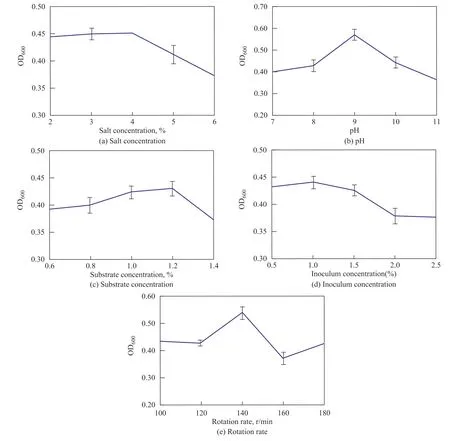
Figure 1 Effect of different growth factors on the growth of petroleum-degrading bacteria

Table 2 Eigenvalue and its contribution rate %
Rotation of component matrix is necessary to the study of the loads of the five original growth factors on the two public factors[24-26]. As shown in Table 3, the five growth factors were divided into two categories according to load. Among them, the salt concentration, the pH value, and the rotation rate were categorised in the first public factor. The inoculum concentration and the substrate concentration were categorised in the second public factor.Next, the corresponding composite score F of each principal component can be calculated as follows:

Table 3 Factor loading matrix after rotation

in which Fiis principal component matrix, and λiis the variance contributes.
Then, the comprehensive scores of every growth factor were sorted by the value of F, with the results listed in Table 4. According to comprehensive scores, the three significant growth factors were pH value, rotation rate, and salt concentration.

Table 4 Comprehensive scores and ranking of the effect of growth conditions on HDMP1 growth
3.4 Optimisation of growth factors
The three significant growth factors were obtained by the analysis of FA and PCA. RSM was used to optimised these growth factors. The results of experiments are shown in Table 5.
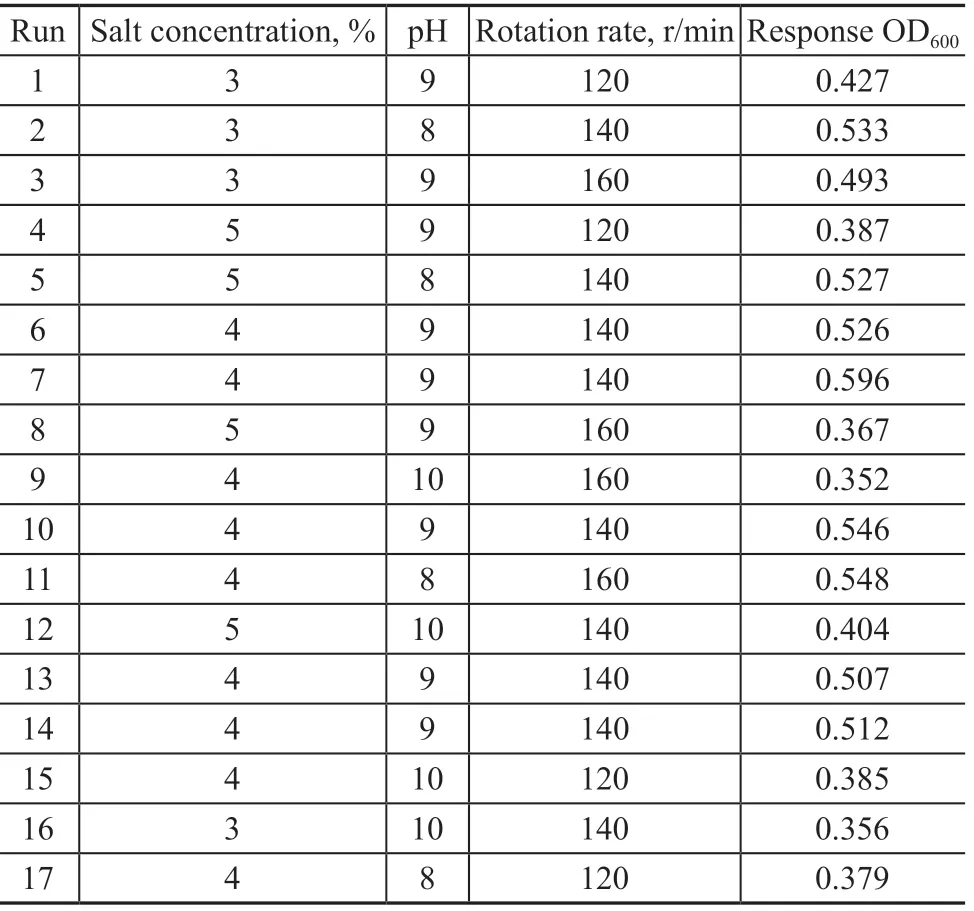
Table 5 Experimental Box-Behnken (BBD) runs in Design-Expert and corresponding results
RSM is an integrated method for building models and can search optimal conditions of variables[27-30]. Firstly, the corresponding second-order response model found after regression analysis was:
OD600=0.54-0.015A-0.061B+0.023C+0.013(AB)-0.022(AC)-0.051(BC)-0.040A2-0.042B2-0.079C2in which A, B and C were the coded values for salt concentration, pH and rotation rate, respectively.
The fit of the model was also expressed by the coefficient of determination R2, which was 0.8768. Then, the results were analysed with ANOVA. The P-value (Prob>F) of the model was 0.0172, which indicated that P-value was significant at the 5% confidence level. The P-value (Prob>F) of the lack of fit was higher than 0.05, which presented insignificance, confirming the significant model correlation between variables and responses.
Secondly, the variance analysis was conducted, with the results displayed in Figure 2. The effect of various factors on the degree of biomass was demonstrated. Among these growth factors, the pH value had the greatest influence, followed by the rotation rate and the salt concentration. The order in terms of interaction was as follows: BC>AC>AB (AB, AC and BC are the factors interaction).
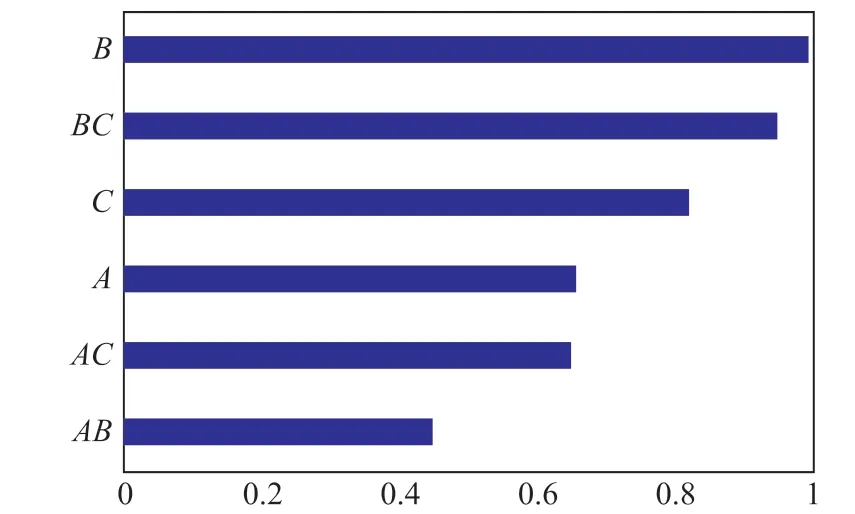
Figure 2 Variance analysis of the effect on OD600
Next, the interaction effect was analysed by using three-dimensional plots. Figure 3(a) shows the interaction effect between the salt concentration and the pH value on OD600. With an increasing salt concentration, the bacterial biomass showed a tendency to initially increase and then slightly decline, whereas the pH value showed more apparent tendency. Hence, the effect of pH value on biomass was greater than salt concentration.
The interaction effect of salt concentration and rotation rate on OD600is depicted in Figure 3(b). OD600increased at first and then declined with the increase in rotation rate and salt concentration. The interaction between the two growth factors was significant.
Figure 3(c) shows the effect of biomass on pH value and rotation rate. OD600drastically increased and then slightly declined with the increase in rotation rate. And the interaction between the pH value and the rotation rate was evident.
According to the analysis, the best conditions for significant growth factors were optimised. A maximum value of OD600can reach 0.583 under optimal growth conditions covering a salt concentration of 3.5%, a medium pH value of 8, and a rotation rate of 151 r/min.
4 Conclusions
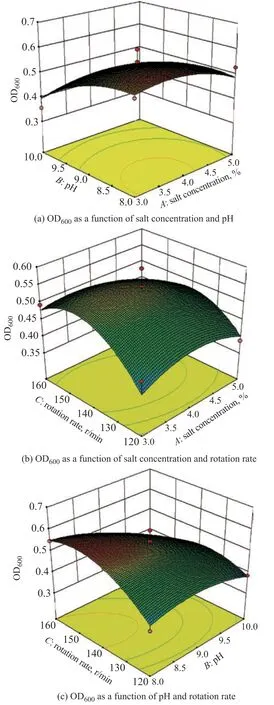
Figure 3 Three dimensional plots for OD600
In this study, a petroleum-degrading bacterium (HDMP1) was isolated and identified as genus Halomonas. Then, the single-factor experiments were performed, and RSM was designed through FA and PCA. The conclusions are as follows:
(1) According to the results of the single-factor experiments, the suitable growth conditions for HDMP1 covered: a salt concentration of 2%—4%, a medium pH value of 9, an inoculum concentration of 1.0%, a substrate concentration of 1.0%—1.4%, and a rotation rate of 140 r/min.
(2) The three significant growth factors included the salt concentration, the pH value, and the rotation rate, which were verified through FA and PCA.
(3) The rank of the factors interaction on the biomass of HDMP1 decreased in the following order: BC>AC>AB (A: salt concentration; B: pH; C: rotation rate; AB, AC and BC are the factors interaction).
(4) A maximum biomass was obtained under the optimised conditions covering a salt concentration of 3.5%, a medium pH value of 8, and a rotation rate of 151 r/min.
Acknowledgements:This work was funded by the National Natural Science Foundation of China (Grant No.51408347), the Open Research Fund Program of Shandong Key Laboratory of Eco-Environmental Science for Yellow River Delta (Binzhou University) (2019KFJJ02), the Major Science and Technology Innovation Projects in Shandong Province (2019JZZY020808), and the SDUST Graduate Technology Innovation Project (SDKDYC190321).
杂志排行
中国炼油与石油化工的其它文章
- Comparison on Adsorptive Separation of n-Paraffins Based on Binderless and Binder-containing Zeolite 5A Pellets
- Effect of Doped Vanadium Dioxide on Oxidative Desulfurization Reaction
- CoMnMgAl Hydrotalcite-like Compounds and their Complex Oxides: Facile Synthesis and FCC SOx Removal
- Boosting the Photocatalytic Activity of WO3 by Highly Dispersed CoWO4 or CuWO4
- Discussion on the Mechanism of Boric Acid and Phosphoric Acid to Improve the Hardening of Complex Calcium Lubricating Grease
- Effect of Zeolite 5A Particle Size on Its Performance for Adsorptive Separation of Ethylene/ Ethane
